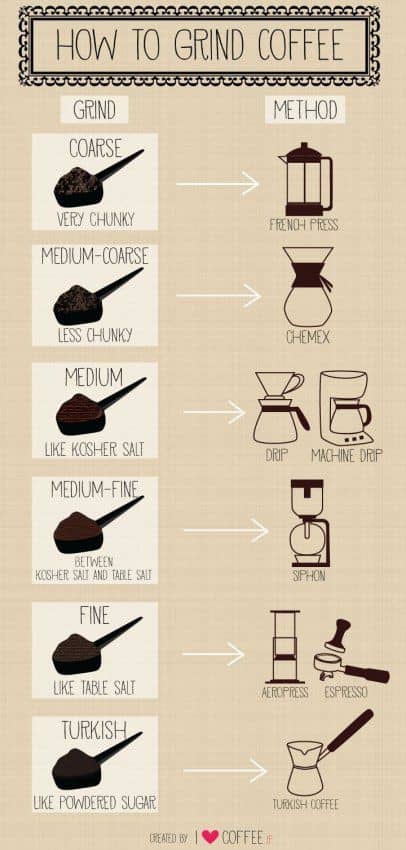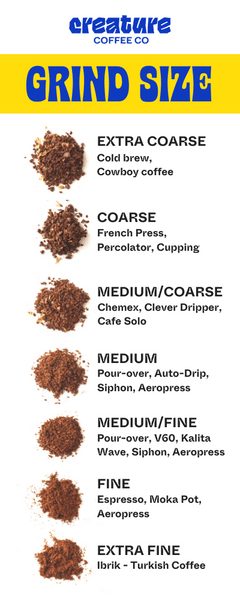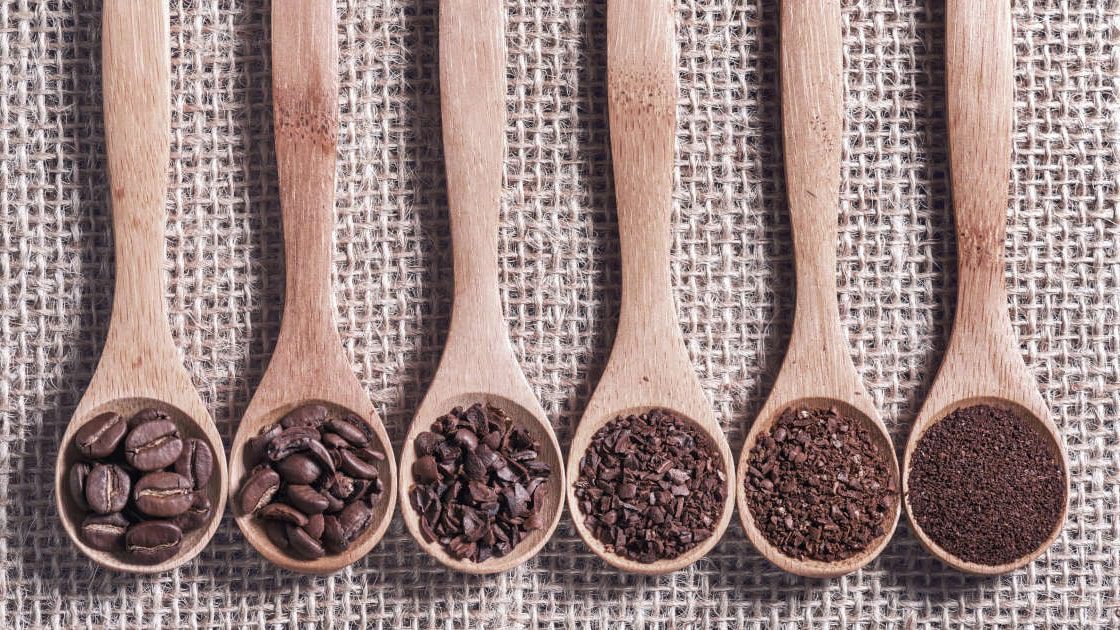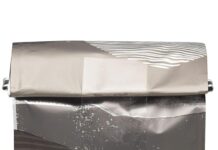When it comes to brewing the perfect cup of coffee, getting the grind just right is crucial. But how can you tell if you’ve done it correctly? The answer lies in a combination of visual cues, aromas, and taste. A finely ground coffee should have the consistency of sand, allowing for an even extraction of flavor. As you pour hot water over the grounds, you’ll notice the alluring aroma of freshly brewed coffee. And when you take that first sip, a perfectly ground coffee will deliver a balance of flavors, with no bitterness or acidity overpowering the delicate notes. So, whether you’re a coffee connoisseur or just starting your journey into the world of coffee, learning how to recognize when you’ve ground your beans correctly will lead you to a truly satisfying cup of joe.
Appearance
Color
When we grind our coffee beans correctly, the color of the ground coffee should be a rich and consistent dark brown. This indicates that the beans have been evenly ground, and that they are ready to be brewed. The color may vary slightly depending on the roast level of the beans, but it should generally be in the medium to dark range.
Texture
The texture of the ground coffee should be fine and uniform, with a consistency that resembles granulated sugar. We want to avoid any clumps or unevenness in the texture, as this can affect the extraction process and lead to an imbalanced flavor in the final cup of coffee. A smooth and even texture is a good sign that we have ground our coffee beans correctly.
Consistency
Consistency is key when it comes to grinding coffee beans correctly. We want all the particles to be of a similar size and shape, as this will ensure an even extraction and a balanced flavor. In order to achieve this consistency, it is important to select the right grind size for the brewing method we are using. Different brewing methods require different levels of coarseness or fineness, so it is important to adjust our grinder settings accordingly for each brewing method.
Aroma
Intensity
The aroma of freshly ground coffee is one of the most delightful aspects of the brewing process. When we have ground our coffee beans correctly, the aroma should be strong and vibrant. The scent of the coffee should be inviting and aromatic, filling the air with its rich and enticing fragrance. A strong and intense aroma is a good indicator that we have achieved the right grind consistency and that our coffee will taste delicious.
Notes
The aroma of coffee can also be complex and nuanced, with different flavors and scents blending together to create a unique sensory experience. When we have ground our coffee beans correctly, we should be able to detect various aroma notes in the scent of the coffee. These notes can range from fruity and floral to nutty and chocolatey. The presence of distinct aroma notes indicates that our coffee beans have been properly ground, allowing for a more flavorful and enjoyable cup of coffee.
Particle Size
Uniformity
For optimal coffee extraction, it is important to have a uniform particle size in our ground coffee. This means that all the coffee particles should be roughly the same size and shape. When we have achieved a uniform particle size, the coffee grounds will extract evenly, resulting in a well-balanced and flavorful cup of coffee. Inconsistent particle sizes can lead to over-extraction or under-extraction, which can affect the taste and quality of the coffee.
Grind Size
The grind size refers to the coarseness or fineness of the coffee grounds. Different brewing methods require different grind sizes in order to achieve the desired flavor profile. For example, a French press requires a coarse grind, while an espresso machine requires a fine grind. When we have ground our coffee beans correctly, the grind size should match the brewing method we are using. Adjusting the grinder settings to achieve the right grind size is crucial for a successful extraction and a delicious cup of coffee.
Brew Time
Adjustments
The brew time is an important factor in the coffee brewing process, as it determines how long the water is in contact with the coffee grounds. When we have ground our coffee beans correctly, we can make adjustments to the brew time in order to achieve the desired flavor. If the coffee is too weak or under-extracted, we can increase the brew time to allow for more extraction. On the other hand, if the coffee is too strong or over-extracted, we can decrease the brew time to limit the extraction. Adjusting the brew time can help us fine-tune the taste of our coffee and create the perfect cup.
Extraction Time
The extraction time refers to the duration of the brewing process, from the moment water comes into contact with the coffee grounds to the moment the brewed coffee is ready to be served. When we have ground our coffee beans correctly, the extraction time should be consistent and predictable. If the extraction time is too short, the coffee may be under-extracted and lacking in flavor. If the extraction time is too long, the coffee may be over-extracted and taste bitter or unpleasant. Finding the right extraction time is crucial for achieving a balanced and delicious cup of coffee.
Taste
Bitterness
Bitterness is a common characteristic of coffee, but when it comes to a properly ground and brewed cup, the bitterness should be balanced and not overpowering. When we have ground our coffee beans correctly, the bitterness should be present but not overwhelming, allowing other flavors to shine through. If the coffee tastes excessively bitter, it may be a sign of over-extraction, indicating that the coffee grounds were ground too finely or brewed for too long. Adjusting the grind size or brew time can help to reduce the bitterness and achieve a more enjoyable taste.
Acidity
Acidity is another important aspect of coffee taste, and when we have ground our coffee beans correctly, the acidity should be well-balanced. Acidity gives coffee its bright and lively flavors, and when properly extracted, it can contribute to a complex and flavorful cup. If the coffee tastes overly acidic or sour, it may be a sign of under-extraction, indicating that the coffee grounds were ground too coarse or brewed for too short a time. Adjusting the grind size or brew time can help to enhance the acidity and achieve a more well-rounded taste.
Flavor
The flavor of coffee is a combination of various elements, including bitterness, acidity, sweetness, and aroma notes. When we have ground our coffee beans correctly, the flavor should be balanced and enjoyable. We should be able to taste the subtle nuances and flavor notes of the coffee, from fruity and floral hints to chocolatey and nutty undertones. The flavor should be smooth and well-rounded, with no unpleasant or off-putting tastes. Achieving the right grind consistency and balancing the extraction time are crucial for unlocking the full flavor potential of our coffee beans.
Extraction
Over-extraction
Over-extraction occurs when too much flavor is extracted from the coffee grounds, resulting in a bitter and unpleasant taste. This can happen when the coffee grounds are ground too finely or when the brew time is too long. Over-extracted coffee may taste overly bitter, harsh, or astringent. To avoid over-extraction, it is important to adjust the grind size and brew time accordingly, ensuring a balanced extraction and a more enjoyable cup of coffee.
Under-extraction
Under-extraction occurs when not enough flavor is extracted from the coffee grounds, resulting in a weak and watery taste. This can happen when the coffee grounds are ground too coarsely or when the brew time is too short. Under-extracted coffee may taste sour, acidic, or lacking in depth. To avoid under-extraction, it is important to adjust the grind size and brew time accordingly, allowing for a more thorough extraction and a richer, more flavorful cup of coffee.
Balance
Achieving balance in coffee extraction is the key to unlocking its full flavor potential. When we have ground our coffee beans correctly, and we have adjusted the grind size and brew time accordingly, we can achieve a balanced extraction. A balanced extraction means that the optimal amount of flavor compounds have been extracted from the coffee grounds, resulting in a harmonious and enjoyable taste. Finding the right balance between bitterness, acidity, and other flavor elements is essential for creating a delicious cup of coffee.
Brewing Method
French Press
The French press brewing method is known for producing a full-bodied and robust cup of coffee. To grind our coffee beans correctly for a French press, we should aim for a coarse grind size. The coarse grind allows for a slower extraction process, resulting in a rich and flavorful brew. The recommended brew time for a French press is around 4-5 minutes, but it can be adjusted according to personal preference. The French press method allows for full immersion and extraction of the coffee grounds, resulting in a strong and satisfying cup of coffee.
Drip Coffee
Drip coffee is one of the most popular brewing methods and is known for producing a clean and smooth cup of coffee. To grind our coffee beans correctly for drip coffee, we should aim for a medium grind size. The medium grind allows for a balanced extraction, neither too fast nor too slow. The recommended brew time for drip coffee is around 5-6 minutes, but it can vary depending on the drip coffee machine and personal preference. The drip coffee method provides a consistent and reliable way to brew coffee, resulting in a well-rounded and enjoyable cup.
Espresso
Espresso is a concentrated and intense form of coffee, and the brewing method requires a fine grind size and a shorter brew time. To grind our coffee beans correctly for espresso, we should aim for a fine grind size. The fine grind allows for a quick and efficient extraction, resulting in a concentrated and flavorful shot of espresso. The recommended brew time for espresso is around 25-30 seconds, but it can vary depending on the espresso machine and personal preference. The espresso method requires precision and attention to detail, but when done correctly, it can produce a rich and velvety cup of coffee.
Equipment
Blade Grinder
A blade grinder is a common and affordable option for grinding coffee beans at home. It consists of a spinning blade that chops the coffee beans into smaller particles. While a blade grinder is convenient, it can result in an inconsistent grind size, leading to uneven extraction and a less balanced flavor. It is important to pay attention to the grind consistency and adjust the grinding time accordingly to achieve a more uniform grind. While a blade grinder can produce acceptable results, investing in a burr grinder is recommended for a more precise and consistent grind.
Burr Grinder
A burr grinder is a more advanced and precise option for grinding coffee beans. It consists of two abrasive surfaces (burrs) that crush the beans into a consistent and uniform grind size. A burr grinder allows for more control over the grind size and produces a more even extraction, resulting in a better-tasting cup of coffee. There are both manual and electric burr grinders available, and they come in a wide range of prices. Investing in a burr grinder is recommended for coffee enthusiasts who want to achieve the best possible grind consistency and flavor.
Grinder Settings
Coarse
A coarse grind size is typically used for brewing methods that involve longer extraction times, such as French press and cold brew. The coarse grind allows for a slower and more thorough extraction, resulting in a rich and full-bodied cup of coffee. When adjusting the grinder settings for a coarse grind, it is important to ensure that the particles are evenly sized and there are no large clumps. A consistent and uniform coarse grind will result in a more balanced flavor and a satisfying brewing process.
Medium
A medium grind size is commonly used for brewing methods such as drip coffee and pour-over. The medium grind allows for a balanced extraction, neither too fast nor too slow. When adjusting the grinder settings for a medium grind, it is important to achieve a consistent and uniform particle size. This will ensure an even extraction and a smooth and enjoyable cup of coffee. The medium grind size is versatile and can be adjusted slightly depending on personal preference and the brewing method being used.
Fine
A fine grind size is typically used for brewing methods that involve shorter extraction times, such as espresso. The fine grind allows for a quick and efficient extraction, resulting in a concentrated and intense cup of coffee. When adjusting the grinder settings for a fine grind, it is crucial to achieve a consistent and uniform particle size. Fine grounds that are too powdery can result in over-extraction and a bitter taste, while fine grounds that are too coarse can result in under-extraction and a weak flavor. Finding the right balance and grind consistency is key to achieving a delicious cup of coffee.
Grind Consistency
Inconsistent
An inconsistent grind size can lead to uneven extraction and a less balanced flavor in the final cup of coffee. When the coffee grounds have varying particle sizes, some will extract more quickly than others, resulting in over-extraction or under-extraction. This can lead to a cup of coffee that tastes bitter, sour, or lacking in flavor. It is important to pay attention to the grind consistency and make adjustments to the grinder settings if necessary. A consistent grind size allows for a more even extraction and a better-tasting cup of coffee.
Consistent
A consistent grind size is crucial for achieving a balanced and flavorful cup of coffee. When the coffee grounds are of a similar size and shape, they will extract more evenly, resulting in a more balanced and enjoyable taste. A consistent grind size allows for a more consistent brewing process, where each particle is extracted at the optimal rate. This produces a cup of coffee that is smooth, well-rounded, and free from any unpleasant or off flavors. Paying attention to the grind consistency and making adjustments to the grinder settings as needed is essential for achieving a consistently delicious cup of coffee.
In conclusion, grinding coffee beans correctly is a crucial step towards brewing a delicious cup of coffee. Achieving the right grind size, uniformity, and consistency is key to ensuring an even extraction and a balanced flavor. The appearance, aroma, taste, and extraction of the coffee can all be influenced by the grinding process. By using the appropriate grinder settings for each brewing method, selecting the right equipment, and paying attention to the grind consistency, we can unlock the full flavor potential of our coffee beans and enjoy a truly exceptional cup of coffee.









































